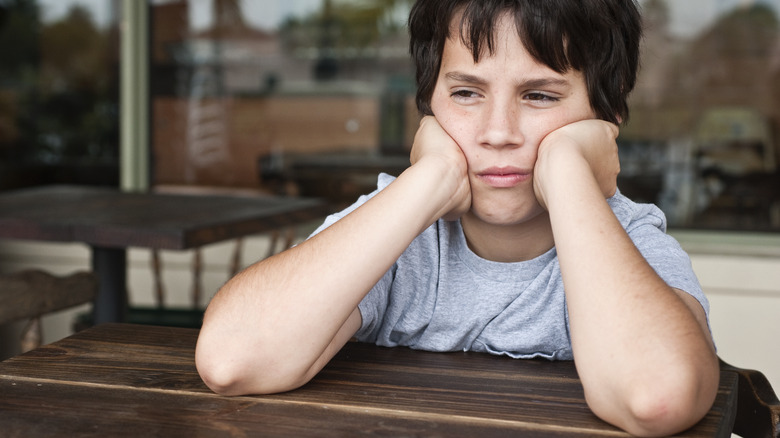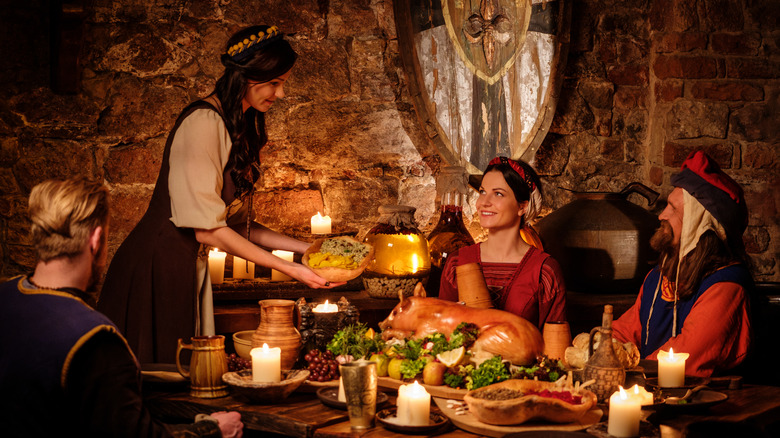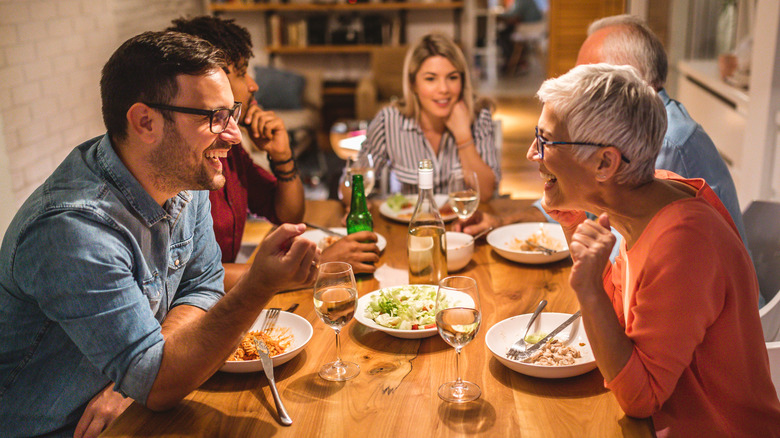The Medieval Origins Of 'No Elbows On The Table' Etiquette
"It's rude to put your elbows on the table!"
This is the kind of proclamation you might associate with your mom, who likely yelled it at you during a family dinner when you were a child. But no matter how old your parents are, this well-known rule of table manners predates them — probably going all the way back to the Middle Ages.
It's difficult to pinpoint the exact origins of this kind of widespread etiquette rule, but there's general agreement that it emerged during medieval times, most likely in England — and for practical reasons. Feasts and banquets in the Middle Ages were popular, jam-packed affairs, with diners packed in tightly at tables. With so little room, placing your elbows on the table could invade your neighbors' space and possibly jostle plates, glasses, or silverware. This could lead to arguments or even physical fights. Therefore, elbows were banished from the tabletop in the name of politeness and a conflict-free dining experience.
Similarly, the rule may have developed to prevent people from accidentally dipping their clothes into food, an issue more likely to occur at an overcrowded table.
Placing your elbows on the table was considered uncouth
There are some other explanations for how the elbow rule came to be. Another theory suggests that medieval feasts often took place on trestles instead of more robust dining tables. Food would be placed on one side, while diners sat on the other. If a guest leaned heavily on the table with their elbows, these trestles — often precariously balanced on a number of legs or supports — could collapse. Clearly, that would not be an ideal situation at any special dinner, hence the rule against elbows on the table.
According to The Gale Review, a 17th-century book titled "A Gentlewoman's Companion" also mentions this rule, describing elbows on the table as a "ravenous gesture." This implied an aggressive hunger that would be considered uncouth when dining among higher society. Additionally, it was believed that placing your elbows on the table could lead to slouching — a separate faux pas at more formal dining settings. Therefore, elbows were forbidden in the name of classiness.
In more recent centuries, the admonition against elbows seems to have been targeted more towards women. Nineteenth-century etiquette suggested that it was unfeminine to show one's elbows.
Is the elbow rule still relevant?
Rules evolve over time, and while it's safe to say that the elbow rule has waned in importance, there are still people who stand by it.
Modern dining etiquette experts tend to take a middle ground on the issue of elbows on tables. Some acknowledge that placing your elbows on the table can actually help you lean into a conversation better, particularly with someone seated across from you. As such, elbows can be acceptable on the table, although some experts recommend doing so only when there's no food present.
On the flip side, some etiquette professionals continue to endorse the traditional view, arguing that keeping your elbows off the table is better for your posture and shows respect for other people's space — particularly in tighter settings or during more formal meals. Therefore, the appropriateness of elbows on the table is really a question of context: It's unlikely to deeply offend anyone, but exercising caution in certain settings may be wise.
Lastly, remember that the elbow rule is not universal — in some cultures, like Japan, it is strictly followed, while in others, such as Vietnam, it's not considered a rule at all. So, your decision to abide by this rule might depend on your dining companions or your location.



